NOTE: While I sit in the house under self distancing work from home for the COVID 19 virus, we take a look back at a hospital in Basking Ridge, New Jersey that very few people knew. And the amazing part is not that I knew there was a hospital in Basking Ridge, I was shocked to learn that there never was a hospital in Jockey Hollow.
Brooks Betz, Historian – Mr. Local History Project
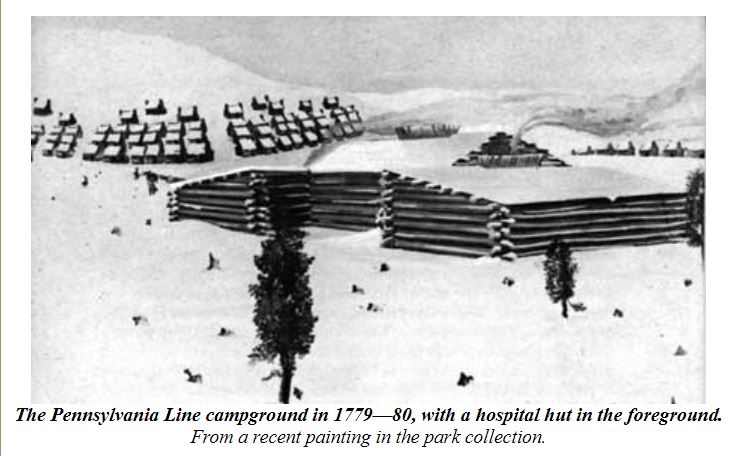
The 1779-1780 Winter Encampment at Jockey Hollow
The Story of the Hospital at Basking Ridge
Weather conditions when the army arrived at Morristown in 1779 were just a prelude of what was yet to come as the elements attacked Washington’s winter camp with terrible severity. As things turned out, the winter of 1779/80 proved to be the most bitter and prolonged winter, not only of the Revolutionary War, but of the whole eighteenth century.
Soldiers recorded four snows in November 1779, seven in December, six in January, four in February, six in March, and one in April. TWENTY EIGHT snowfalls altogether, some of which lasted for days. The great storm of January 2nd thru the 4th was among the most memorable on record, with life threatening snow and high winds. “Several marquees were blown down over the officers’ heads in the night,” wrote Dr. Thacher, “and some of the soldiers were actually covered while in their tents, and buried under the snow.” When this blizzard finally subsided, the snow was over four feet deep on a level, drifted in places up to six feet, filling up the roads, covering the tops of fences, and making it practically impossible to travel anywhere with heavy loads. So where was the Army Hospital. Many historians point that it wasn’t in Jockey Hollow, but the hospital was in Basking Ridge.
The Morristown – Basking Ridge Hospital Trail
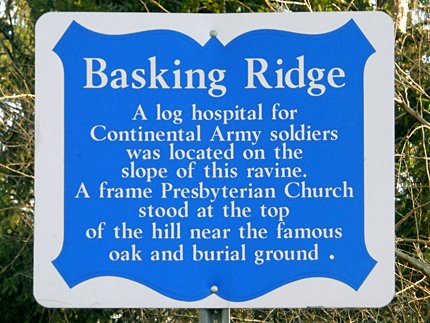
There was reason to spread out services behind the Watchung Mountains and the need for hospitals was just one of those needed services. Traveling between Morristown and Basking Ridge was quite easy. Today’s route is very similar to the one soldiers made back in 1779. Start in the Center of Morristown, travel south down Route 202, and turn left at the Grain House onto North Maple Avenue. Take North Finley Avenue past Elias Boudinot’s house (The Ross Farm) the Hutton’s property just south of East Craig Street before the Basking Ridge Presbyterian Church. The hospital was next to a a well-known spring on the Hutton’s property just along what’s known as the Penns Brook and Southard Park. Total distance – 10 miles.
As far as roads were concerned, this was a major road, known by French soldiers as “Le grande chemin” or “the great highway” connecting Morristown and Basking Ridge. The red line is the beginning of Basking Ridge Road, which later became Route 32, Mt. Kemble Road and today is US Route 202.
John Morton and The Hospital at Basking Ridge
John Morton was a Colonel in the Continental Army but gave up his commission in 1761 to become a highly successful merchant, specializing in the trade of flax back home to his native Ulster in Northern Ireland supporting the country’s linen industry. He became one of the wealthiest men in New York City before the Revolution and he described himself as a self-sacrificing patriot during the struggle for Independence.
As wealthy merchant, Morton became known as the “Rebel Banker” for loaning large sums of money to the rebel cause. 1775 Morton liquidated most of his capital to loan the Revolutionary War effort. After the capture of New York City by the British, John and Maria Sophia Morton were forced to flee with their large family (six kids) to Elizabethtown, New Jersey, where they remained for several weeks in a house in Springfield with five other families, who were also fugitives. Not feeling safe, they decided to go beyond the “Long Hill” and settled on Basking Ridge in 1776 where they called for their belongings from New York City.
There is a reference to another John Morton from Pennsylvania who signed the Declaration of Independence, but there is no relation.
General Washington and John Morton
In Basking Ridge, the Mortons supported Washington’s troops in the nearby Morristown encampment, establishing the 1779 army cantonment hospital on their land and providing housing for medical staff. On a number of occasions, George Washington and members of his top staff dined with the Mortons at their family home. He was given special praise on the occasion of Independence in 1777.
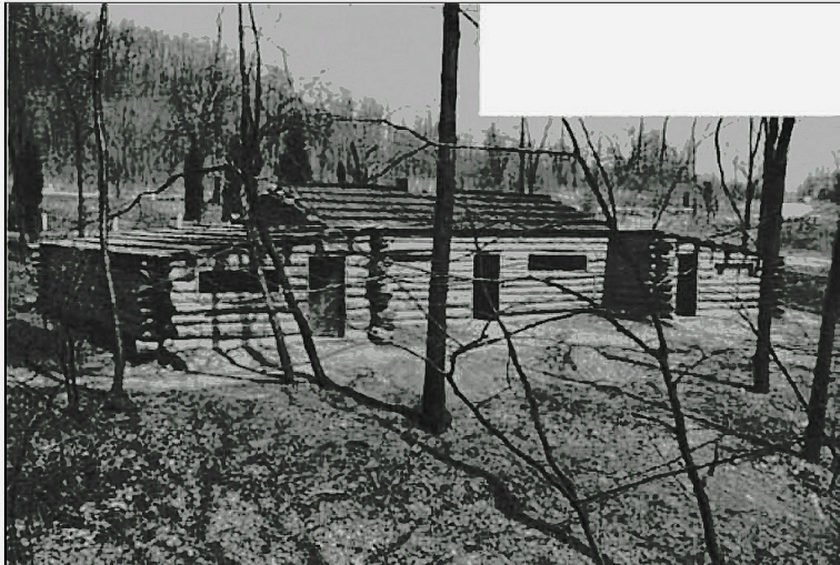
Dr. James Tilton’s Baskinridge Experiment
The specially designed experimental hospital Dr. James Tilton constructed and used successfully at Basking Ridge in the winter of 1779-80 was constructed with three wards, equipped with bunks, and accommodated twelve patients in the central section, and eight in each wing. In cold weather, a “fire was built in the midst of the ward, without any chimney, and the smoke circulating about passed off through an opening about 4 inches wide in the ridge of the roof.” The patients lay with their heads to the wall and their feet turned to the fire. The smoke, Tilton wrote, combatted “infection, without giving the least offense to the patient, for it always rose above their heads, before it spread abroad in the ward.” Thus, he maintained, he had provided a small, uncrowded, completely ventilated hospital where patients suffering from fevers could be separated from the wounded. The hospital could hold up to 55 patients.
The hospital was located on the Morton’s property. There was a well-known spring on the property just off the main road. His second daughter, Eliza Susan Morton Quincy, a child during the Revolutionary War, wrote about the hospital in her memoirs in 1821. Susan later married Josiah Quincy III, the Mayor of Boston, President of Harvard, and a member of Congress. John Morton was born in 1720, married Maria Sophia Morton, and died in 1781. It was noted that his son Jacob sold the Veal Town Mill and 40 acres on July 24, 1782 (New Jersey Journal) and the family sold the home and moved back to Elizabethtown in 1783.
The Morton Family

The Morton family was a very prominent family in Basking Ridge. Connected to Elias Boudinot just up the street and had deep relationships with William Alexander aka Lord Stirling who lived just to the South in Basking Ridge. Commander George Washington also visited and dined with the Mortons at their home in Basking Ridge.
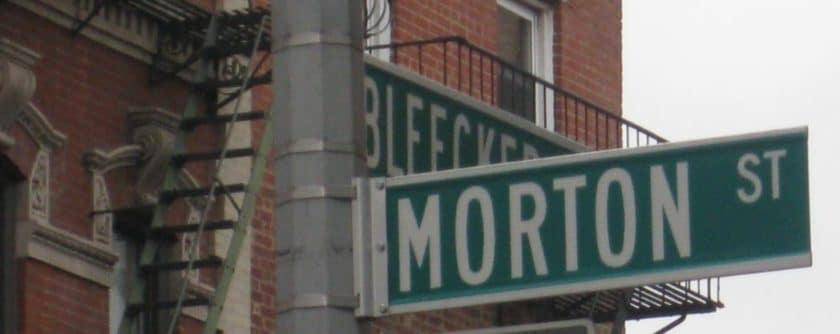
One of my first memories of the war was my father, who was always attentive to every officer of the army, called on General Lee, and invited him to breakfast the next day. He accepted, but as he did not appear at the appointed time, Mr. Morton became impatient, and walked up the hill to meet his expected guest. On his way he encountered the country people running in great consternation, exclaiming, ‘The British have come to take General Lee!’ My father hurried on, and saw Lee, without hat or cloak, forcibly mounted, and carried off by a troop of horse; and as he had but few attendants, but little resistance was attempted. One of his men who offered to defend him, was cut down and wounded by the sabers of the horsemen. He was brought to our house where he was taken care of until he was carried on a litter to a surgeon in Mendham.
John Morton’s daughter Eliza writes about her early days in Basking Ridge about the December 13, 1776 capture of General Lee at Widow White’s Tavern just down the street near Colonial Drive.
The Morton house was a two-story home halfway down the hill behind the church. Studies indicate that the early colonists to this region adapted the “half-timber” style of construction, which was popular in Europe, using a frame of braced timbers filled in with masonry. The “bank house” was a popular form of home during this period, typically constructed on a hillside for protection during the region’s cold winters and hot summers. On one side the parlor windows were even with the ground and on the other was a high porch with seats. Steps lead to the 2nd story. In front was a small courtyard, as gardens flanked the hill. Furnished from their New York belongings, it was called a “gentleman’s residence.” The Boudinout estate was a mere half mile up the road. Lord Stirling’s “The Buildings” were two miles down the road. In addition to his home, he owned a nearby grist mill in Veal Town (most likely the stone-reconstructed Van Dorn Mill)
“Baskinridge was in a retired, pleasant situation, enclosed by some high land called ‘the Long Hills.’ It was a secure place from the British, and at times in the center of the American Army. The head-quarters of Washington were at Morristown, only seven miles distant. The hospital was located on Mr. Morton’s estate. It was long, low log building, situated on a rising ground in a meadow: a brook ran in front of it, and supplied the inmates with water cooking and washing. Dr. Tilton, the director of the medical department with Dr. Stevenson, Dr Coventry, and other physicians, had rooms in my father’s house; and a small school-house was converted into an apothecary’s shop. This arrangement continued more than two years, and the society of these gentlemen was very agreeable.”
Basking Ridge in Revolutionary Days – Personal Memoir Quincy Road in Basking Ridge was named for Susan Morton Quincy (1764-1850), who wrote her recollections of Basking Ridge during and after the American Revolution. It’s the road just off Lyons Road that goes up to William Annin Middle School.
It was a long, low, log building, situated on a rising ground in a meadow ; a brook ran in front of it, and supplied the inmates with water for cooking and washing. Dr. Tilton, the director of the medical department, with Dr. Stevenson, Dr. Coventry, and other physicians, had rooms in my father’s house ; and a small school house was converted into an apothecary’s shop. This arrangement
continued more than two years, and the society of these gentlemen was very agreeable.
“Across the high road was a fine spring — excavated and lined with boards — making a kind of cistern four or five feet square. Over a small brook (Penns Brook) which ran from it was what was called a ‘spring house,’ for milk and butter, under the shade of some large trees. The barns were also on that side of the road, farther up the hill, on the top of which the church, the burial ground and a school house were situated near a wood of oak trees. At the foot of the hill below the garden another brook flowed through a meadow ; and beyond it was a grove of trees, not thick but shady.In this brook and about it my sister and I often played, building dams across it to have the pleasure of seeing the water fall over them. . . . “The country people near Basking Ridge were not generally kind or hospitable to the exiles from New York ; but there were many honorable exceptions. Among these were our excellent neighbors, the families of Samuel Lewis (Lewis Drive) and Henry Southard (Southard Park). The lower classes in New Jersey did not enjoy the advantage of the common schools of New England; and they were too ignorant and selfish even to understand the peculiar hardships.
Somerset Hills Historical Quarterly
Morton’s home was referred to as Morton’s Place until 1783 when the Morton’s sold the home and moved back to Elizabethtown. Dr. Amandee F. Voorhees, MD (Vorhees Drive) sold the property to the Stevens family of Castle Point (Hoboken) who used it as a fresh air home in connection with the Episcopal Church. They then sold it to John J. Allen (Allen Road) who sold some of the land to the Basking Ridge Presbyterian Church and the rest to William Child’s Jr, (Childs Road) the restaurateur. He in turn being a member of the BRPC donated all but three acres to the church. Then in May 1911, the house and three acres were sold to Mathilda Greulock who lived there in 1911. Mr. Freeman was a tenant but never lived there. (Somerset Hills Historical Quarterly Vol.3 -1914)
At the end of the war John Morton’s wife, Maria Sophia, could return to New York with her children. An incredible tale of a farmer’s son from Ballynougher, sharing a table with George Washington, and playing a significant role in the most important event in the history of America.
Daughter Eliza stated in her diary that her father John died on April 24, 1781, and his funeral was overseen by Reverend Samuel Kennedy (1720-1787). It was stated that Colonial Elias Boudinot served as Executor of Morton’s will. Morton was buried on the hill behind the Basking Ridge Presbyterian Church on his property.
Medical Support
Surprisingly, however, in view of the conditions at the camp, there were relatively few patients in the hospitals serving the soldiers at Basking Ridge and Pluckemin during the winter of 1779/80. In February 1780, approximately 3.5 percent of the slightly more than 11 ,500 men at Morristown were reported seriously enough ill to be hospitalized and perhaps more than twice this number of the sick were cared for within their own quarters. Those men requiring prolonged hospitalization were sent to the Basking Ridge or Pluckemin hospitals. In the period March to April 1780, 670 men, or 60 percent of the total requiring hospitalization did not leave the care of the regimental surgeons. Only eighty-six died from December 1779 through June 1780.
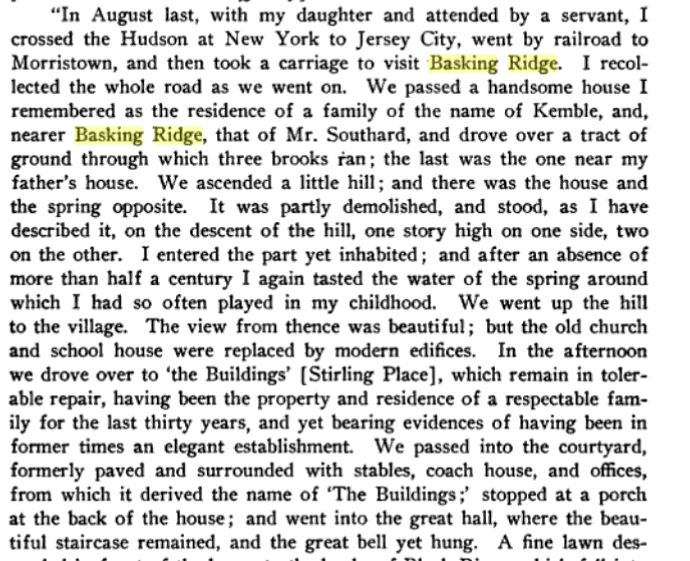
In 1781, the Pennsylvania Brigade rebellion was mentioned in Morristown. James Christie (Chrystie), Captain of the 3rd Regiment of Company E was mentioned as the first who rushed into the Morton household providing intelligence of the revolt, and begged to be stashed from the soldiers he feared were on his track. He survived as the rebellion was later put down.
No Morristown Hospital
THE CAMP HOSPITAL, REVOLUTIONARY BURYING GROUND, AND BETTIN OAK
In 1940, a replica hospital building was constructed from plans and descriptions by Dr. James Tilton, hospital surgeon in 1779-80 and later Surgeon General of the United States, as published in his manual for medical military officers which appeared in 1813.
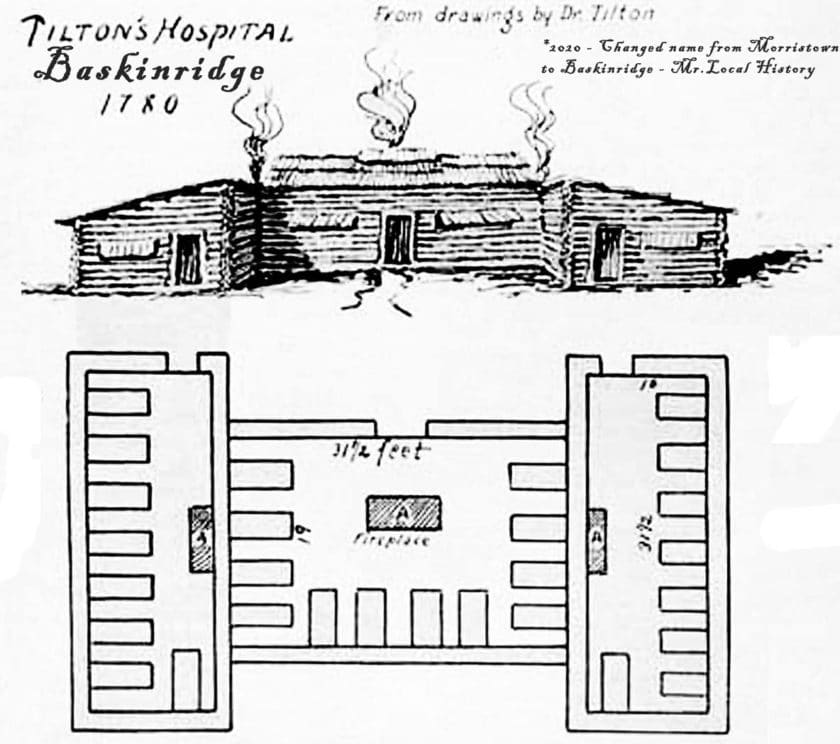
66 feet by 34 feet the central ward with two wings was constructed with large oak logs with straw and mud roofed with cedar shingles. Park officials had the hospital razed along with its display because no one confirmed it was at that location. NPS officials stated the hospital was NOT in Jockey Hollow but was most likely ONLY in Basking Ridge.
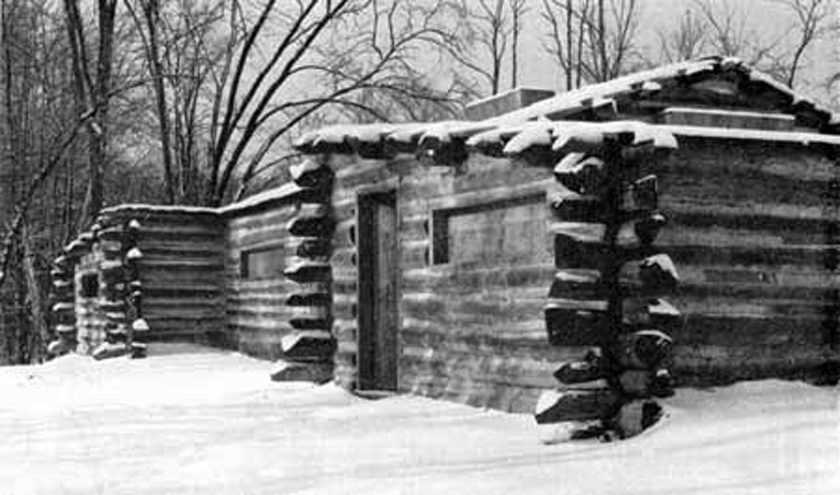
Across from the reconstructed hospital was an old burying ground where, according to tradition, lie the remains of about a hundred American soldiers who failed to survive the severe winter of 1779-80. Capt. Adam Bettin, who was killed in the mutiny of the Pennsylvania line on January 1, 1781, is buried under or near a massive old oak tree that now bears his name. This tree is on the Jockey Hollow Road.
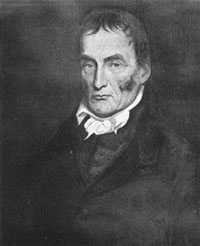
An American soldier, physician, and Surgeon General during the War of 1812, James Tilton was in command of some number of hospitals in Morristown and Princeton, New Jersey. Concerned with the high death rate of contracted diseases in hospitals, Tilton constructed hospital wards with well-ventilated ceilings known as “Tilton Huts.” These windowless huts were small buildings divided into three sections. Tilton wouldn’t allow wood to be use during this construction as he believed the natural resource harbored infection, which practically eliminated the spread of infectious diseases. In 1790, Congress passed Tilton’s “Code of Regulations for the Army Medical Department,” which redefined how hospitals are built today. Tilton was announced as one of the top five American military doctors ever.
The Morton’s and Rochambeau March – 1781
While lacking the strength to take the offensive against British strongholds, the army nonetheless could contain the British and fend off attacks as long as it remained in its positions in the Hudson Highlands and the hills of New Jersey, including the Watchung Mountains. The combination of Gen. Rochambeau’s and Gen. George Washington’s forces culminated 15 months later in the victory at Yorktown.

Records indicate that when the French were on the move during their march to Yorktown, they stopped at Morton’s home on the hill where the hospital had once stood. The map above shows the route from Morristown, stopping in Basking Ridge and Liberty Corner (Bullions Tavern), now the area of the English Farm. It was said that up to 10,000 mobilized troops were present.
The Washington-Rochambeau Revolutionary Route National Historic Trail marks the 680 miles of land and water trails that follow the route taken by General Washington and General Rochambeau to and from the siege of Yorktown. It passes through New Jersey, following many roads that have existed since the 18th century, roads that pass through towns large and small, offering unity to the many communities along the way.
More MLH Revolutionary War Research
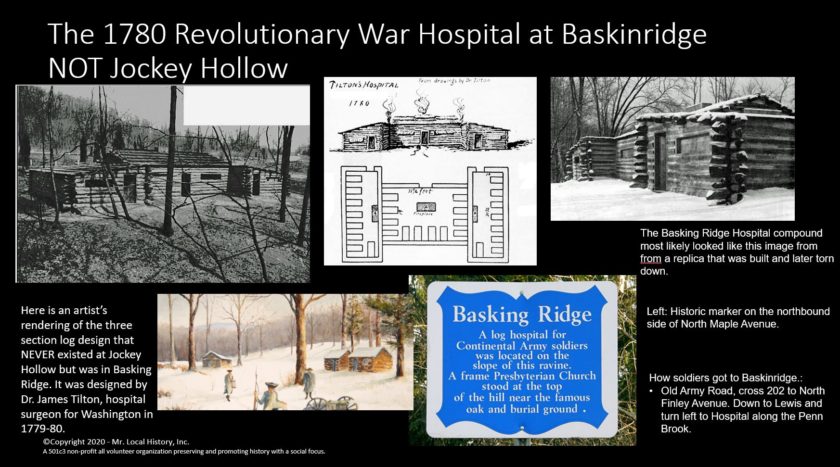
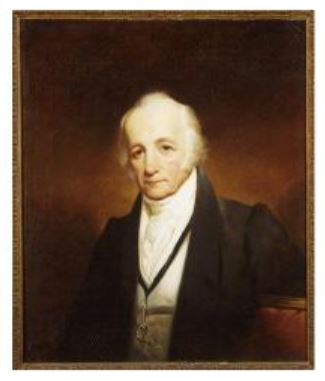
Gen. Jacob Morton of Morton Hill, Ballynogher, Magherafelt Parish, County Londonderry, Ireland.
- John Morton b. 1711 Dawson’s Bridge, Co. Antrim, Ireland d. Apr. 24, 1781 was the great-grandson of Gen. Jacob Morton.
- Maria Sophia (Kemper) Morton b.May 25, 1738 d.Sep. 22, 1832 at 94 in Boston. Married in 1760. Maria’s brother John Kemper was John Morton’s brother-in-law.
- Jacob Morton – b.1761 d.1836 – August 15, 1794 Major General – occupied the house after his marriage in 1791 and commanded the Militia.
- John Morton – b.1765 d. 1835 in Philadelphia, PA
- Mary Margaret Morton- b.1772 d.1852 in New Windsor, CT. Married D. Ritzemar Bogart
- Eliza Susan Morton – b. Sept. 26, 1774 in NYC married Josiah Quincy III d.1850
- Washington Morton – b.1776 Elizabethtown, married Cornelia Schuyler (Alexander Hamilton’s wife’s sister). d.1808 in France. Noted as the FIRST child EVER named after the commander in Chief George Washington.
- George “Clark” Morton: b.1752 d. November 1821
- Map of New Jersey – 1812 – Princeton University
- Map of Somerset County – Princeton University
- Washington – Rochambeau March 1781
- How a 4 home plan got bumped due to a Hospital Rumor – 2007 – The applicant, Ridge Custom Homes, LLC, sought to redevelop two adjoining lots that total 5.29 acres on East Craig’s south side opposite Berta Place. The lots include homes at 25 and 35 East Craig St., each of which would be demolished.
- John Morton’s Death – Basking Ridge, New Jersey
- The Story of an Old Farm – a great history read.
- Morton Family Genealogy
- Memoirs of Colonel Sebastian Beauman and His Descendants : With Selections from His Correspondence (Book) Page 53 onwards.
- Eliza Susan Morton Quincy, Memoir of the life of Eliza S.M. Quincy (Boston: J. Wilson and Son, 1861) page 19. Available on Google Books.
- Quincy wrote in 1821, when she was the wife of Josiah Quincy, would later become Mayor of Boston. In a prefatory note, she explains, “In compliance with the request of my children, I have written from memory and from the recollections of my mother, now residing in our family and eighty-three years of age, the following narrative of some events in the lives of my maternal ancestors and of my own early life.”
- Eliza was born in 1774, and so she would have been very young when the hospital was here, so presumably her mother’s memories helped to supply her with some of the details about the hospital.
- A portrait of Eliza, painted in 1809 by Gilbert Stuart, is in the collection of the Museum of Milwaukee. A photo of the painting can be seen on the Museum of Milwaukee website.
- Gilbert Stuart is best known for his paintings of George Washington, including the one that is the basis for the image on the One Dollar Bill


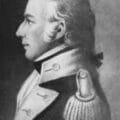
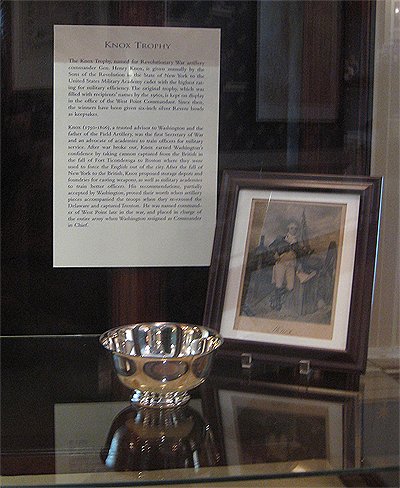
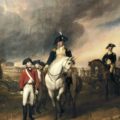
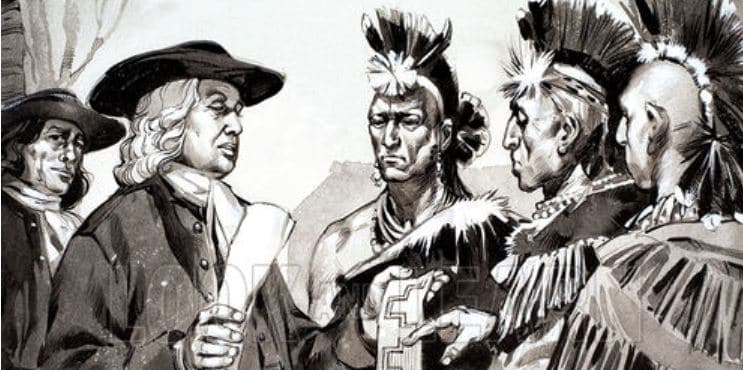
“He was given special praise on the occasion of Independence in 1777. ”
1777? I believe that the date was 4 July 1777.
April 19, 2020
Dear Mr. Betz,
Great article on the Basking Ridge hospital. I did not know that this was THE hospital used during the Jockey Hollow encampment. a copy of the hospital is in the exhibit at basement of Washington’s Headquarters Museum in Morristown. Interesting that the 3 wards were totally separate from one another. I was not aware of James Tilton or John Morton. Is Morton’s gravesite (“behind the cemetery”) able to be visited by the public?
Thanks,
Bob Wong
I’ll have to go look at the basement exhibit when it reopens. Not sure on where Morton is buried as most sources stated he was buried on his property, but there is question on how much of the Presbyterian church cemetery creeped and might have merged with some of John Morton’s property (but we think it is close since they mention he was buried on a hill and there’s a hill behind the cemetery). Honestly, this is where I love history. One story just leads to another.
This site is now my mothers house. Our family often is visited by a male ghost. Wonder if it is Morton or someone else who may have passed at the hospital.